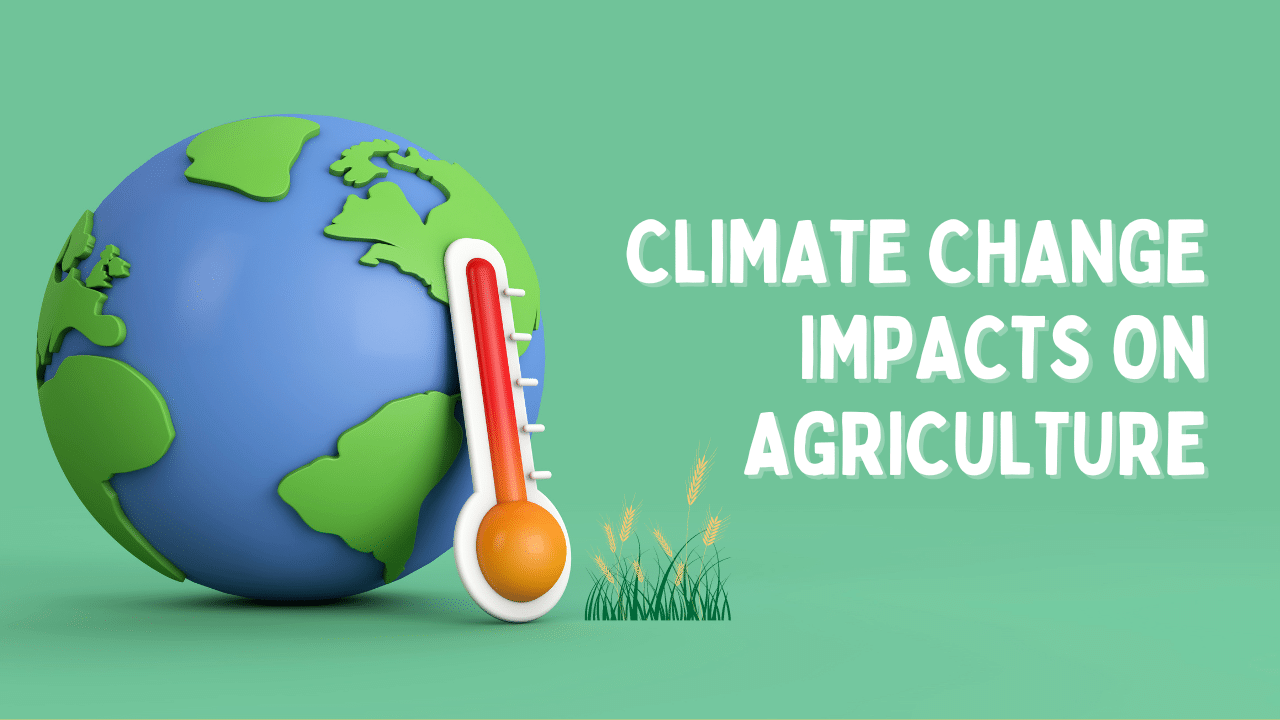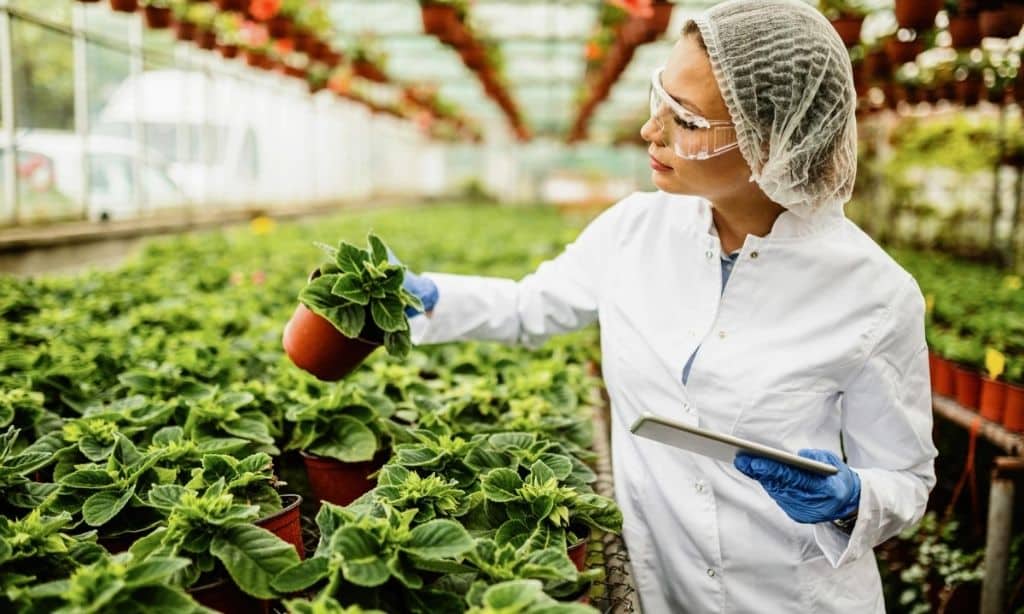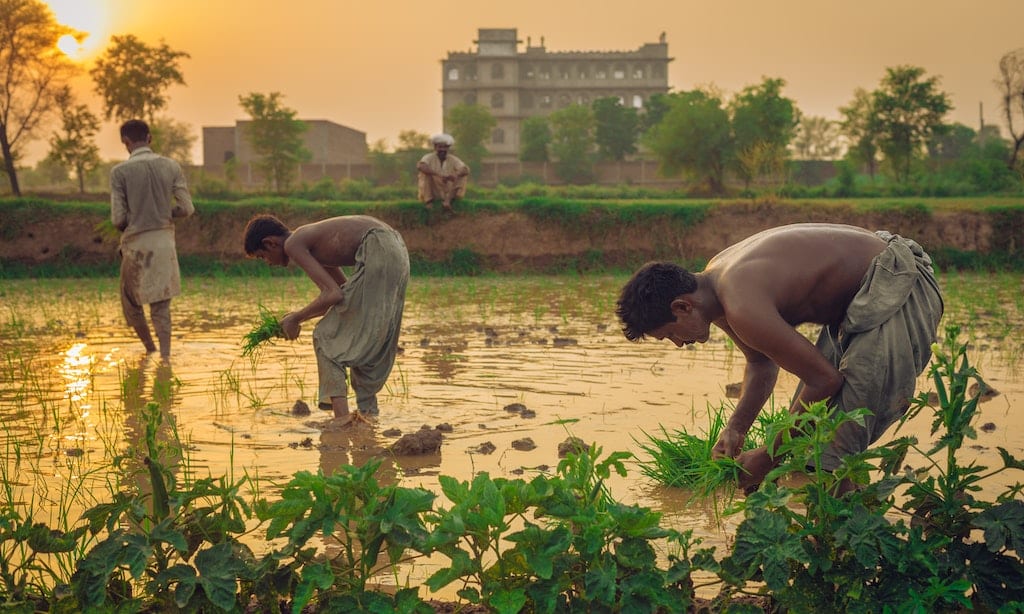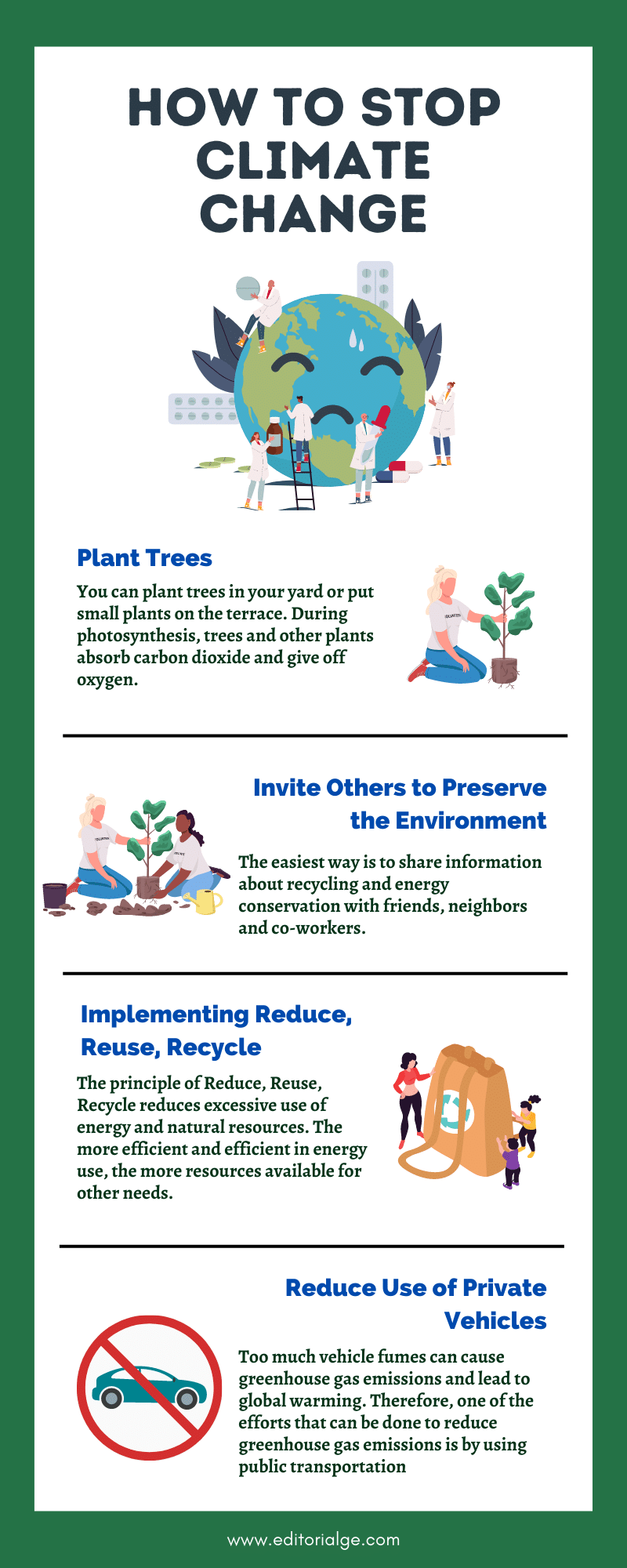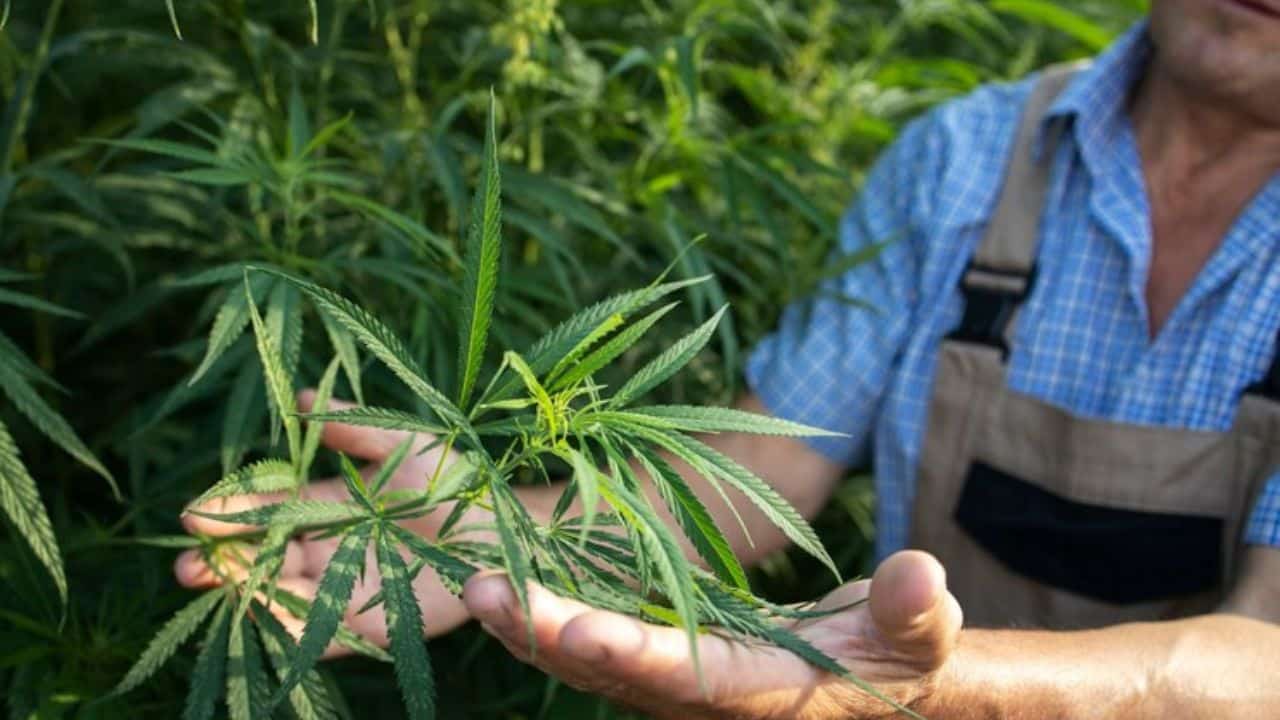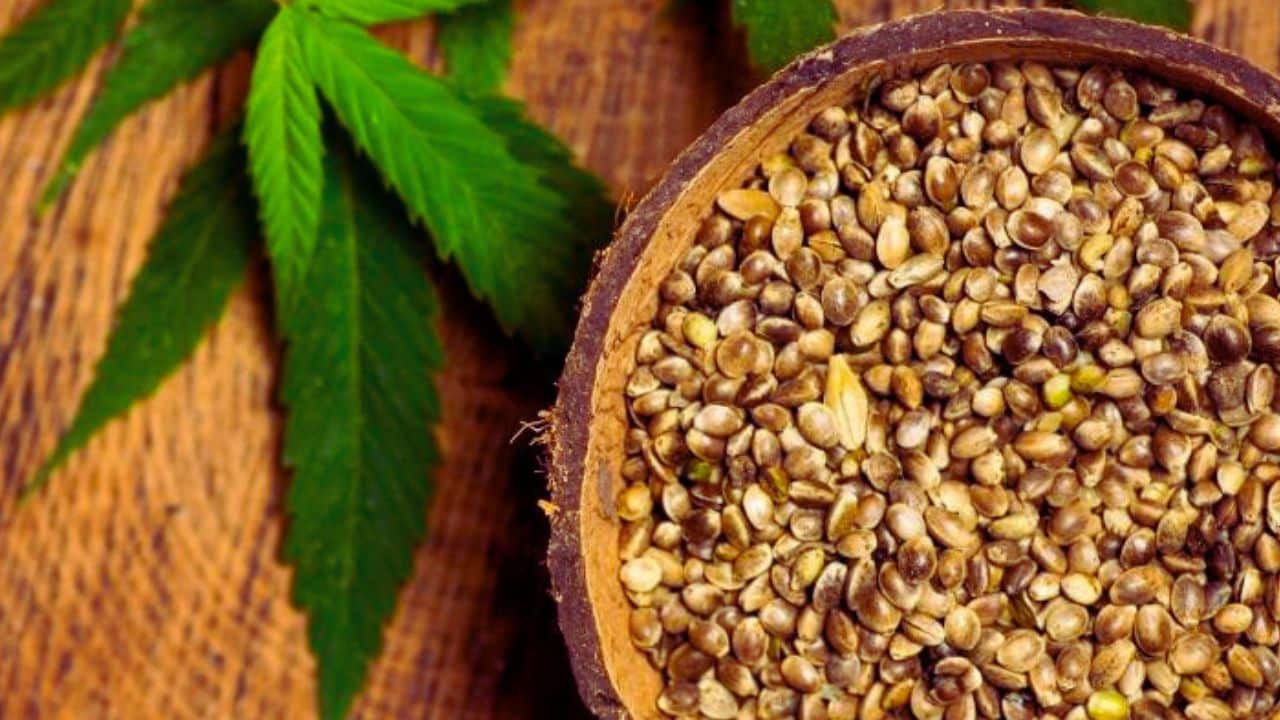Listen to the Podcast:
Are you aware of how climate change affects your food? Unsettlingly, climate change impacts agriculture and food supply. This blog will unfold the various impacts, from crop productivity to economic consequences and potential adaptation strategies.
Let’s understand how this global phenomenon truly influences what lands on your plate.
Key Takeaways
- Climate change negatively impacts agricultural productivity, including changes in crop yields, shifts in growing seasons, increased pests and diseases, and water scarcity.
- Soil erosion, reduced fertility, droughts, water scarcity, and increased flood risks are some of the effects of climate change on soil and water resources in agriculture.
- Agricultural workers and livestock face health challenges such as heat stress and increased pesticide exposure due to climate change. Adaptation strategies should prioritize protecting their health.
The Link Between Agriculture and Climate Change
Agriculture and climate change share a complicated, intertwined relationship creating both negative and positive effects on agriculture. On one side, agricultural practices contribute to climate change by releasing significant amounts of greenhouse gases into the atmosphere.
Methane from livestock digestion processes and nitrous oxide from synthetic fertilizers contribute to global warming.
Conversely, agriculture is at the mercy of climate change impacts. Temperature and rainfall patterns can drastically affect plant growth cycles, potentially reducing crop yields.
Furthermore, an increase in severe weather events attributed to climate change threatens farmland through soil erosion and flood damage. The future of climate change paints a concerning image for the global food supply, with heightened growing conditions leading to food insecurity as another potential consequence.
This intricate bond between climate change and agriculture necessitates immediate attention if we aim for long-term sustainability in our food systems.
Impacts on Agricultural Productivity
Climate change significantly impacts agricultural productivity, including changes in crop yields, shifts in growing seasons, increased pests and diseases, and water scarcity.
Changes in Crop Yields
Climate change impacts on agriculture are evident in the significant fluctuations in crop yields. As temperatures rise and rainfall patterns shift, crops are exposed to conditions far from optimal growing environments.
Though some plants may thrive under heightened carbon dioxide levels beyond a specific range of temperatures, warming tends to reduce yields dramatically.
For instance, staple foods such as maize (corn) and wheat could face production challenges by 2030 due to these climatic changes. Worryingly, it’s not just about reduced output; the nutritional quality of harvested produce can also dwindle under harsh weather extremes.
This situation threatens the global food supply, highlighting the urgent need for sustainable adaptation strategies within our agricultural systems.
Shifts in Growing Seasons
Climate change significantly alters the delicate balance of our planet’s seasons. This shift disruptively impacts agriculture, as crops are acutely sensitive to variations in weather and climate conditions.
Certain plant species may thrive depending on their specific growth cycle requirements, while others suffer amidst these seasonal fluctuations. For instance, an unexpectedly early spring might coax plants into premature blooming, only for a sudden late frost to devastate the vulnerable flora.
However, it’s not just the intricacies of plant biology that are at risk due to shifting seasons caused by climate change impacts on agriculture; farmers’ livelihoods are under threat too. A crop expected to be harvested in October may need picking in August or even later in December, greatly disturbing farming schedules and associated industries like transport and retail.
Such unpredictable shifts can lead to wastage due to inadequate storage facilities or market gluts, contributing to rising food prices and global food insecurity.
Therefore, understanding climate change impacts on food supply is crucial for sustainable agricultural planning worldwide.
Increased Pests and Diseases
Climate change has led to an increase in pests and diseases affecting agriculture. This has significant implications for crop productivity and food supply. Here are some key points to consider:
- Pests and diseases in agriculture have become more prevalent and severe due to climate change.
- The warming temperatures create favorable conditions for the reproduction and spread of pests, such as insects, fungi, and bacteria.
- Changing climate patterns disrupt natural pest control mechanisms, allowing pests to thrive.
- Rising temperatures also accelerate the life cycles of pests, leading to increased infestations and crop damage.
- Climate change can alter the distribution of pests, expanding their range into new areas previously unaffected.
- Invasive species may establish themselves in regions where they were once unable to survive, posing threats to local agriculture.
- Changes in precipitation patterns can create ideal conditions for the growth of fungi and other pathogens that cause plant diseases.
- Warmer winters allow certain pests and diseases to survive and multiply year-round rather than being effectively controlled by cold weather.
Water Scarcity
Water scarcity is one of the most pressing issues regarding climate change’s impact on agriculture and our food supply. As temperatures rise across the globe, water availability is expected to decrease, leading to significant challenges for farmers.
Due to water scarcity, some countries could see a staggering 60 percent drop in agricultural production by 2050. This will have a profound effect on both rain-fed and irrigated farming, undermining their productivity.
With less water available, meeting the growing demand for food will become an increasingly formidable challenge for global food production.
The effects of water scarcity extend beyond just quantity – quality is also at stake. Drought conditions can reduce the amount of water available for farming and compromise its quality.
This means that even if some water is left, it may not be suitable or sufficient for productive farms and grazing lands. The negative impacts on agricultural productivity cannot be overstated.
Effects on Soil and Water Resources
Climate change has significant consequences for soil and water resources, including erosion, reduced fertility, droughts, water scarcity, and increased flood risks.
Soil Erosion
Soil erosion, a gradual process caused by the forces of water and wind, poses a significant threat to agricultural productivity. As soil particles are detached and carried away, the quality of the soil deteriorates, reducing its fertility.
This decrease in soil fertility has dire consequences for crop yields, making it harder for farmers to grow enough food to meet increasing demands. Moreover, eroded soil can lead to water pollution as it is carried downstream, impacting aquatic ecosystems and human health.
With climate change exacerbating these processes, we must prevent further degradation of our soils and ensure sustainable food production for future generations.
Read More: World Rainforest Day 2023
Reduced Soil Fertility
Climate change significantly threatens soil fertility, which is essential for productive agriculture. Rising temperatures and changes in precipitation patterns can lead to increased soil erosion and nutrient loss.
As a result, the ability of soil to support healthy crops diminishes over time. This decline in fertility not only hampers agricultural productivity but also contributes to the expansion of deserts and further exacerbates climate change.
The loss of fertile soil due to erosion is a critical concern, affecting food availability and quality, impacting our global food supply. Adequate measures need to be taken urgently to preserve soil health through sustainable farming practices and mitigating climate change effects on agriculture.
Droughts and Water Scarcity
Droughts and water scarcity caused by climate change can devastate agriculture. As a result of changing precipitation patterns, farmers face challenges in maintaining their crops and livestock.
Droughts reduce water availability and quality, which are essential for productive farming. This not only affects crop yields but also poses risks to food safety. Additionally, the environment is impacted as drought disrupts ecosystems by disrupting plant growth and animal habitats.
With climate change exacerbating water scarcity and related hazards such as floods and droughts, we must find sustainable solutions to ensure our agricultural systems can adapt to these challenges.
Increased Flood Risks
Increased flood risks due to climate change significantly threaten agriculture and our food supply. Heavy rainfall and extreme weather events can lead to flooding on farmlands, causing crop loss, soil erosion, and contamination.
This impacts farmers’ livelihoods, affects food production, and threatens food security. Flood disasters are becoming more frequent and severe, resulting in damaged equipment, debris deposition, and increased costs for farmers.
Furthermore, flooding can contaminate water supplies, leading to outbreaks of waterborne diseases that further hinder agricultural productivity. Addressing these increased flood risks is crucial in ensuring the stability of our agricultural systems and safeguarding our access to safe and nutritious food.
Health Challenges to Agricultural Workers and Livestock
Agricultural workers and livestock face significant health challenges due to climate change, including heat stress, increased pesticide exposure, and the spread of diseases. These impacts highlight the urgent need for adaptation and mitigation strategies in agriculture.
Read on to learn more about the effects of climate change on our food supply.
Heat Stress and Heat-related Illnesses
Heat stress and heat-related illnesses are significant health challenges agricultural workers and livestock face. The increasing temperatures caused by climate change exacerbate these issues.
- Agricultural workers are at risk of heat stress, leading to dehydration, heat exhaustion, and even heatstroke. Heat stress can decrease productivity and increase the likelihood of accidents on the farm.
- Livestock, such as cows and pigs, also experience heat stress. This can result in reduced fertility, decreased milk production, and even death in severe cases.
- Heat-related illnesses pose a considerable threat to farming communities. These illnesses include heat cramps, rash, and life-threatening conditions like heat stroke.
- Preventive measures such as providing shade, ample drinking water, and regular breaks can help mitigate heat stress risks for workers and livestock.
- Climate change adaptation strategies should prioritize protecting the health of agricultural workers from extreme temperatures.
Increased Exposure to Pesticides
Pesticides play a significant role in food production, protecting or increasing crop yields, but they also pose potential health risks for consumers due to pesticide residues in food. Climate change exacerbates this issue by increasing the need for pesticide use and the risk of exposure to agricultural workers and consumers. Here are some key points to understand the increased exposure to pesticides:
- Pesticide needs: As climate change leads to warmer temperatures, it creates favorable conditions for pests and diseases to thrive. This increases the demand for pesticides to protect crops and prevent yield losses.
- Pest outbreaks: Rising temperatures can disrupt natural pest control systems and allow pests to reproduce faster, leading to larger outbreaks that require increased pesticide application.
- Changing pest distribution: Climate change can shift the geographic range of pests, bringing new threats to previously unaffected areas. This necessitates increased pesticide use in regions where farmers may not have prior experience or knowledge of effective pest management strategies.
- Extended growing seasons: Warmer temperatures can extend the length of growing seasons for certain crops, resulting in longer exposure periods for farmers who apply pesticides throughout different crop growth stages.
- Increased spray events: Climate change contributes to more frequent extreme weather events such as heavy rainfall or heat waves. These events require additional pesticide applications before or after the event to protect crops from disease outbreaks or damage caused by stress factors.
- Health risks: Agricultural workers face an increased risk of pesticide exposure due to their direct contact during application, handling, and harvest activities. Prolonged exposure can lead to acute and chronic health effects such as skin irritations, respiratory problems, neurological disorders, and certain cancers.
- Consumer concerns: With the rise in pesticide use driven by climate change impacts on agriculture, there is a heightened concern about pesticide residues in food individuals consume. Pesticide residues have been associated with adverse health effects, including hormonal disruption, developmental issues in children, and the potential for long-term health problems.
- Regulatory challenges: The increased use of pesticides due to climate change presents regulatory challenges in ensuring safe levels of pesticide residues on crops. It requires stricter monitoring, enforcement, and research to mitigate potential risks to human health and the environment.
Spread of Diseases Among Livestock
Livestock are particularly vulnerable to the impacts of climate change, including the increased spread of diseases. Here are some key points to consider:
- Climate change can disrupt the natural balance between disease-causing organisms and their hosts, increasing the frequency and severity of diseases among livestock.
- Rising temperatures and changing precipitation patterns can create favorable conditions for disease vectors, such as mosquitoes and ticks, which transmit diseases to livestock.
- Temperature changes can also affect pathogens’ incubation period and survival rates, allowing them to thrive and spread more quickly.
- Livestock stressed by extreme weather events or inadequate nutrition may have weakened immune systems, making them more susceptible to infections.
- The movement of livestock due to changes in pasture availability or water scarcity can introduce and spread diseases across different regions.
- Livestock markets, where animals from different areas are brought together, can serve as hotspots for disease transmission if proper biosecurity measures are not in place.
Economic Consequences
Climate change has significant economic consequences, including decreased farm incomes, rising food prices, and losing jobs in the agricultural sector.
Decreased Farm Incomes
Climate change has significant implications for the economic stability of farmers around the world. As temperatures rise and weather patterns become more erratic, agricultural production is negatively impacted, decreasing farm incomes.
According to studies, climate change could reduce global crop yields by up to 25% by 2050. This decline in productivity directly affects farmers’ ability to make a living and support their families.
Additionally, extreme weather events such as droughts and floods can cause crop losses, further exacerbating financial hardships for farmers. The consequences are far-reaching, with rising food prices and potential job losses in the agricultural sector adding to the economic burdens faced by communities heavily reliant on agriculture.
Rising Food Prices
Rising food prices are a significant consequence of climate change’s impact on agriculture. As temperatures rise and extreme weather events become more frequent, crop yields can be severely affected.
This leads to decreased supply and increased demand, driving up the cost of food. Global warming has already been linked to higher food commodity prices in recent years due to disruptions in weather patterns like heat waves, heavy rainfall, and droughts.
Small-scale farmers who rely on agriculture for their livelihoods are particularly vulnerable, as rising prices can decrease their farm incomes and make it harder to afford basic necessities.
Loss of Jobs in the Agricultural Sector
Climate change is affecting crop yields and food availability and posing a threat to jobs in the agricultural sector. Agricultural workers face significant challenges with changing weather patterns, extreme heat waves, and increased risk of disease outbreaks.
Heat stress can decrease productivity and even heat-related illnesses among farmers and laborers. Additionally, changing weather patterns can disrupt planting and harvesting seasons, reducing labor demand.
As a result, jobs in the agricultural sector are potentially lost. In California alone, drought impacts resulted in $1.84 billion in direct costs and a loss of 10,100 seasonal jobs in 2015.
Climate change’s impact on agriculture extends beyond just crop yields; it also affects the livelihoods of those who rely on this industry.
Environmental Justice and Equity
Climate change exacerbates environmental injustices and inequities, disproportionately affecting marginalized communities through the loss of traditional agricultural practices and increased food insecurity.
Disproportionate Impacts on Marginalized Communities
Climate change has far-reaching consequences, and one of the groups most affected by its impacts is marginalized communities. This includes racial and ethnic minority groups already vulnerable due to economic disparities.
Studies have shown that these communities bear a disproportionate burden on climate change impacts. They often face more significant challenges from extreme weather events, such as hurricanes or floods, which can damage infrastructure and disrupt critical services like healthcare and transportation.
Additionally, food security becomes a major concern as crop failures and water scarcity affect agricultural productivity, making it harder for these communities to access nutritious food. We must address these inequities and ensure equal protection for all individuals in the face of climate change.
In addition to facing infrastructural challenges during extreme events, marginalized communities also suffer from health effects caused by climate change. Heat stress is a significant concern, particularly for outdoor workers such as farmers in these communities, who may be exposed to long hours under scorching temperatures.
Furthermore, the increased use of pesticides in response to rising pest populations can pose health risks to agricultural workers as they come into contact with harmful chemicals without proper protective measures.
Loss of Traditional Agricultural Practices
The impacts of climate change extend beyond crop yields and economic consequences; they also threaten the loss of traditional agricultural practices. These practices, deeply rooted in cultural heritage and knowledge, are at risk due to changing weather patterns, increasing pest pressures, and water scarcity.
This loss affects farmers’ livelihoods and can lead to environmental justice issues and food insecurity for marginalized communities who rely on these practices for sustenance.
We must recognize and address this aspect of climate change’s impact on agriculture to ensure a sustainable future for our food supply.
Food Insecurity
Food insecurity is a significant consequence of climate change’s impact on agriculture and food supply. As the Earth’s climate changes, extreme weather events become more frequent and unpredictable, leading to food production, transportation, and storage disruptions.
This instability can result in limited access to affordable and nutritious food for communities worldwide. Climate change also increases competition for resources needed for food production, such as water and land.
As these resources become scarcer or more expensive due to changing precipitation patterns and rising temperatures, it becomes increasingly difficult for individuals and households to secure enough food for their basic needs.
Adaptation and Mitigation Strategies
Implementing sustainable farming practices, diversifying crops to increase resilience, and implementing effective water management strategies are crucial for mitigating the impacts of climate change on agriculture.
In addition, providing support for small-scale farmers is essential in building a more resilient food system. Discover how these strategies can help secure our future food supply.
Sustainable Farming Practices
Sustainable farming practices are crucial for mitigating the impacts of climate change on agriculture and ensuring long-term food supply. Here are some key sustainable farming practices:
- Conservation agriculture: This approach involves minimizing soil disturbance through reduced tillage or no-till farming, which helps to preserve soil structure, moisture content, and biodiversity.
- Agroforestry: Planting trees alongside crops can provide shade, reduce soil erosion, and enhance nutrient cycling.
- Crop rotation: Rotating different crops in a field over time helps to improve soil health by preventing the build-up of pests and diseases and maintaining fertility.
- Precision agriculture: Using technology, such as GPS-guided machinery and remote sensing, enables farmers to optimize their use of fertilizers, pesticides, and water resources, reducing waste and environmental impact.
- Water management: Efficient irrigation systems like drip irrigation and precision sprinklers help conserve water by delivering it directly to crops’ roots while minimizing evaporation.
- Cover cropping: Planting cover crops during fallow periods can prevent soil erosion, improve soil quality through increased organic matter, and suppress weeds.
- Integrated pest management (IPM): IPM combines various pest control methods like biological controls (using natural predators), crop rotation, habitat manipulation, and targeted pesticide use to minimize chemical inputs while effectively managing pests.
- Livestock management: Sustainable livestock practices include rotational grazing systems that prevent overgrazing and allow for ample rest periods for pastures to regenerate.
Crop Diversification and Resilience
Crop diversification and resilience are crucial strategies for farmers to adapt to the impacts of climate change on agriculture. By diversifying their crops, farmers can mitigate the risks of changing weather patterns and reduce vulnerability to crop failure. Here are some key ways in which crop diversification promotes resilience:
- Increased resistance to pests and diseases: Planting various crops helps prevent the spread and buildup of pests and diseases that might otherwise devastate a single crop. Diversified farming systems create an unfavorable environment for pests, reducing the need for chemical pesticides.
- Improved soil health: Different crops have nutrient requirements, root structures, and growth habits. Farmers can replenish soil nutrients, control weed populations, and reduce erosion by rotating crops. This practice enhances soil fertility, promoting sustainable agricultural practices.
- Enhanced water management: Some crops consume more water than others, while certain varieties tolerate dry conditions better. Planting a mix of water-efficient and drought-tolerant crops optimizes water use by reducing overall irrigation needs and adapting to periods of drought or limited water availability.
- Buffer against climate extremes: Climate change increases temperature volatility, rainfall patterns, and extreme weather events. Crop diversification allows farmers to spread risk across multiple crops with different environmental tolerances. Even if one crop suffers from adverse conditions, others may thrive.
- Nutritional benefits: Diverse cropping systems provide economic stability and contribute to improved diets for farming communities. Different crops offer a wider range of vitamins, minerals, and dietary diversity essential for good health.
- Preservation of traditional knowledge: Crop diversity supports continuing traditional agricultural practices passed down through generations. These practices often incorporate locally adapted seeds resilient to specific climatic conditions—an invaluable resource in times of uncertainty.
Water Management Strategies
Water management strategies are crucial in mitigating the impacts of climate change on agriculture and ensuring a sustainable food supply. Here are some effective water management strategies:
- Implement efficient irrigation systems: Switching to more efficient irrigation methods, such as drip or sprinkler systems, can significantly reduce water waste and improve crop water use efficiency.
- Promote rainwater harvesting: Harvesting rainwater through storage tanks and other collection methods can help farmers supplement their irrigation needs during dry periods and reduce reliance on groundwater sources.
- Enhance on-farm water storage: Installing reservoirs or ponds on farms can store excess rainfall or irrigation water for later use, providing a buffer during drought.
- Adopt precision agriculture techniques: Utilizing advanced technologies like remote sensing and soil moisture monitoring allows farmers to apply water precisely where and when needed, reducing over-irrigation.
- Practice land conservation measures: Implementing practices such as contour plowing, terracing, and cover cropping helps to minimize soil erosion, retain moisture in the soil, and reduce the need for additional irrigation.
- Invest in wastewater recycling: Treating and reusing wastewater from agricultural activities can provide an additional water source for irrigation while minimizing pollution risks.
- Encourage water-saving farming practices: Promoting techniques like conservation tillage, mulching, and crop rotation helps retain soil moisture and reduces evaporation losses.
- Support integrated watershed management approaches: Collaborative efforts among stakeholders in managing watersheds can enhance the availability of water resources for agriculture while preserving ecosystems.
- Improve water infrastructure: Developing or upgrading infrastructure for efficient water storage, conveyance systems, and distribution networks ensures reliable access to water resources for agricultural purposes.
- Raise awareness about water conservation: Educating farmers about the importance of responsible water use through workshops, training, and extension services can encourage adopting best practices.
Support for Small-scale Farmers
Small-scale farmers play a crucial role in our food supply chain, but they are particularly vulnerable to the impacts of climate change. They often lack the resources and infrastructure to adapt to changing weather patterns and extreme events.
However, some strategies can provide support for these farmers. McKinsey research has identified over 30 measures that smallholder farmers can implement to adapt to and mitigate climate change, such as using drought-tolerant crops and implementing sustainable farming practices.
Additionally, government support for climate-smart agriculture is essential in providing financial assistance, access to technology, and training programs for small-scale farmers. Investing in research and development is crucial in developing innovative solutions tailored to their needs.
Read Also: AI Can Help Climate Change
Policy Recommendations
Government support for climate-smart agriculture, investment in research and development, and international cooperation are crucial policy recommendations to address the impacts of climate change on agriculture and ensure a sustainable food supply.
Government Support for Climate-smart Agriculture
Government support for climate-smart agriculture is crucial in addressing the challenges posed by climate change on agriculture and food supply. With the impacts of climate change becoming increasingly evident, governments worldwide are recognizing the need to invest in sustainable farming practices that are resilient to changing weather patterns.
These investments can take various forms, such as financial incentives, technical assistance programs, and policy initiatives aimed at promoting climate adaptation and mitigation strategies.
For example, the USDA offers programs and services to help farmers minimize greenhouse gas emissions, conserve water resources, and enhance soil health in the United States. By supporting climate-smart agriculture practices, governments protect agricultural livelihoods and contribute to building a more sustainable future for food production.
Investment in Research and Development
Investing in research and development is crucial in addressing the impacts of climate change on agriculture and food supply. It plays a pivotal role in finding innovative solutions to mitigate the negative effects of climate change on crop yields, soil fertility, and water resources.
Through increased investments, scientists and researchers can develop climate-smart technologies and practices that promote sustainable farming methods.
For example, investment in agricultural research can lead to the discovery of new crop varieties that are more resistant to extreme weather conditions or have higher nutrient content. Research can also help identify effective water management strategies for farmers facing water scarcity due to changing rainfall patterns.
Investing in R&D can support small-scale farmers by equipping them with the knowledge and tools needed to adapt to a changing climate.
Moreover, investing in research and development has broader implications beyond just agriculture. It helps us better understand the complex relationship between climate change and food systems, enabling policymakers to make informed decisions for ensuring global food security while reducing greenhouse gas emissions.
Bridging the global investment gap in agricultural research is essential for achieving Sustainable Development Goals related to hunger and meeting commitments under the Paris Agreement.
International Cooperation
International cooperation is crucial in addressing the policy recommendations related to climate change impacts on agriculture and food supply. As climate change knows no boundaries, countries must develop strategies, share knowledge, and coordinate efforts to mitigate and adapt to its effects.
This collaboration is essential in tackling issues such as water scarcity, soil erosion, and the spread of pests and diseases that directly impact agricultural productivity. By working together, nations can pool resources and expertise to implement sustainable farming practices, support small-scale farmers, and ensure food security for all.
International cooperation is necessary and beneficial for creating a resilient global agricultural system capable of withstanding the challenges posed by climate change.
Final Words
In conclusion, the impacts of climate change on agriculture and food supply are undeniable. The consequences are far-reaching, from decreased crop yields to water scarcity and health challenges for agricultural workers.
It is crucial to prioritize sustainable farming practices, supports small-scale farmers, and implement effective policy measures to mitigate these effects. Only through collective efforts can we ensure a resilient and equitable future for our food production systems in the face of climate change.
Frequently Asked Questions
Check out some commonly asked questions on climate change impacts on agriculture.
1. How does climate change impact agriculture and food supply?
Climate change can impact agriculture and food supply, including changes in temperature and precipitation patterns, increased frequency of extreme weather events such as droughts or floods, shifts in growing seasons, and the spread of pests and diseases. These changes can disrupt crop yields, affect livestock health and productivity, reduce water availability for irrigation, and ultimately threaten food security.
2. What are some specific effects of climate change on crops?
Climate change can lead to reduced crop yields due to heat stress or water scarcity. It can also alter the nutritional composition of crops, affecting their quality as a source of essential nutrients. Additionally, changing climatic conditions may favor the growth of invasive weeds or pests that can outcompete crops for resources.
3. How does climate change affect livestock production?
Climate change affects livestock production through several mechanisms. Rising temperatures can cause heat stress in animals, reducing their productivity and increasing mortality rates. Changes in rainfall patterns may result in feed shortages or poor-quality forage for grazing animals. Extreme weather events like hurricanes or wildfires can also threaten animal welfare.
4. Are there any solutions to mitigate the impacts of climate change on agriculture?
Climate change can be mitigated in agriculture through several methods. These include adopting precision technologies to optimize resource use; promoting agroforestry systems that provide shade and wind protection; investing in research to develop more resilient crop varieties; diversifying cropping systems to reduce vulnerability; improving irrigation efficiency; and supporting production.

